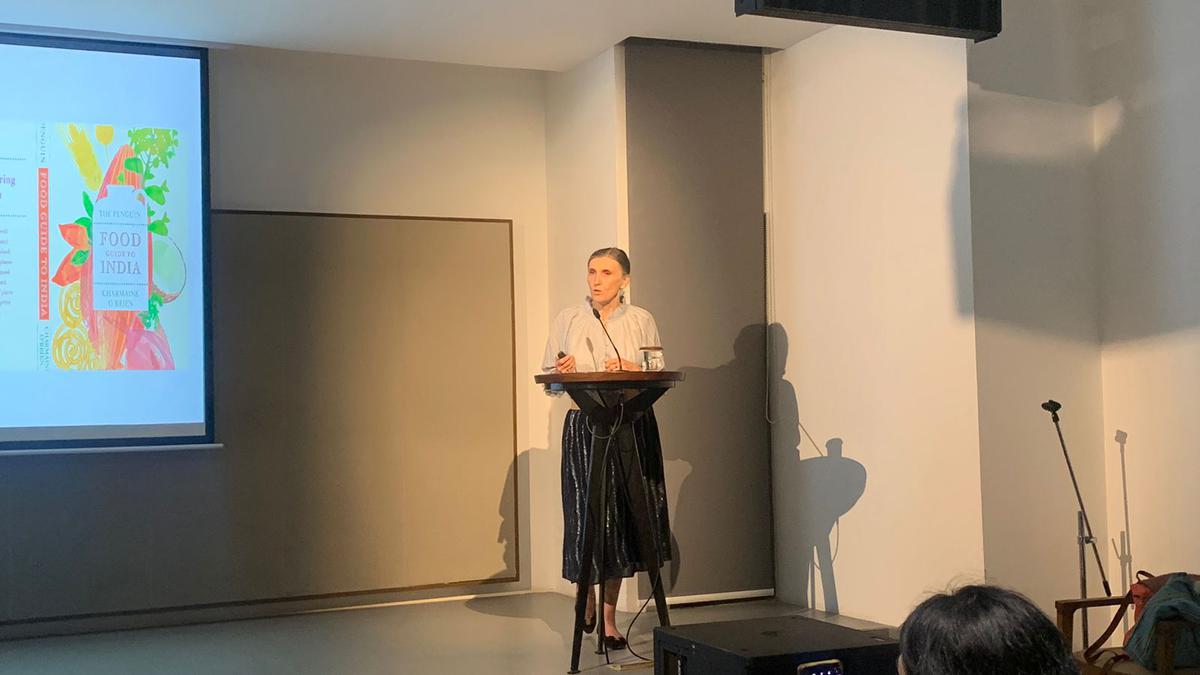
Historian’s take on India’s diverse, changing food culture Premium
The Hindu
Food historian Charmaine O’Brien says that while the convenience of packaged food is undeniable, especially for women who continue to disproportionately carry the burden of preparing food for the family, it comes with some repercussions.
When Charmaine O’Brien first came to India, back in 1995, she thought that Indian food mostly comprised of oily, spice-laden curry: the sort of food she had encountered at Indian restaurants back home in Australia. “I thought this is what people in India ate at home. I didn’t know any better,” she says at a recent event at the Bangalore International Centre titled Tasting the Trends where the writer and food historian delved into India’s culinary zeitgeist.
She found herself fascinated by the diversity of India’s food culture, noting that even the snacks available on a train changed a hundred-odd km down the track. “I also noticed that a lot of people felt sorry for me because I had to eat outside,” she says, with a smile. People only ate outside when they were travelling and had no other choice, she noticed, only venturing into a restaurant on a special occasion. This was interesting to me because, in Australia, it was all about restaurants and chefs. That was where the best food was,” says Charmaine, who is known for her scholarship around both Indian and Australian cuisine. “Food at home was considered the best food.”
She also mentions that most of her other books such as Flavours Of Delhi, Recipes From An Urban Village and The Penguin Food Guide to India, lean towards what she–for want of a better term–thinks of as traditional Indian food. “But when I was doing the Penguin Food Guide, I was also noticing how India was changing around me,” says Charmaine, who recently released her latest book, Eating the Present, Tasting the Future: Exploring India Through Her Changing Food.
Very early in the talk, Charmaine addresses what she foresees to be the elephant in the room. “I am obviously not an Indian,” she says, adding that this offers both advantages and disadvantages when it comes to documenting the food of the subcontinent. For starters, as an outside observer, she believes that it allows her to notice things that someone on the inside may miss. “Because I am an outsider, I have some unique perspectives to offer,” says Charmaine, who has, however, travelled extensively across India, visiting many home kitchens in the country and has an Indian partner. “I do acknowledge that because I am not Indian, I may miss nuances,” she says.
Using photographs, she takes her audience into kitchens all over the country, including Sikkim, Arunachal Pradesh, Assam and Bihar, sharing her experience of these encounters. “I have been everywhere in India and had the privilege of getting into people’s homes. They were incredibly generous to me in that respect,” says Charmaine. She also mentions that this interest in Indian food and its history catalysed a similar interest in Australian food history. “I was an aspiring food historian, and I didn’t know about my own country’s food history,” she says, recalling how she grew up in the 1950s, eating a lot of meat, bread and cabbage. “I didn’t think there was anything to see there. I didn’t think Australia had a food history.”
Part of the reason for that, of course, is that despite being home to people from different backgrounds, “our general food culture is not that diverse,” she says, pointing out that Australian food systems are largely industrialised with most people buying their food in similar-looking supermarkets. “There is no different embedded food culture because every food we eat in Australia, with a couple of exceptions (such as macadamia nuts and seafood), comes from somewhere else,” says Charmaine. According to her, the Australian food history of the 19th century is very linked to the British food history of the same time. “This is tied to the Industrial Revolution that created a lot of significant change in Britain. Australia is kind of a product of that,” she says. She also says that she has noticed a similar socio-cultural change happening in India over the last few decades. “I wanted to capture that. This is an amazing story.”
“No power on Earth can stop an idea whose time has come.”











